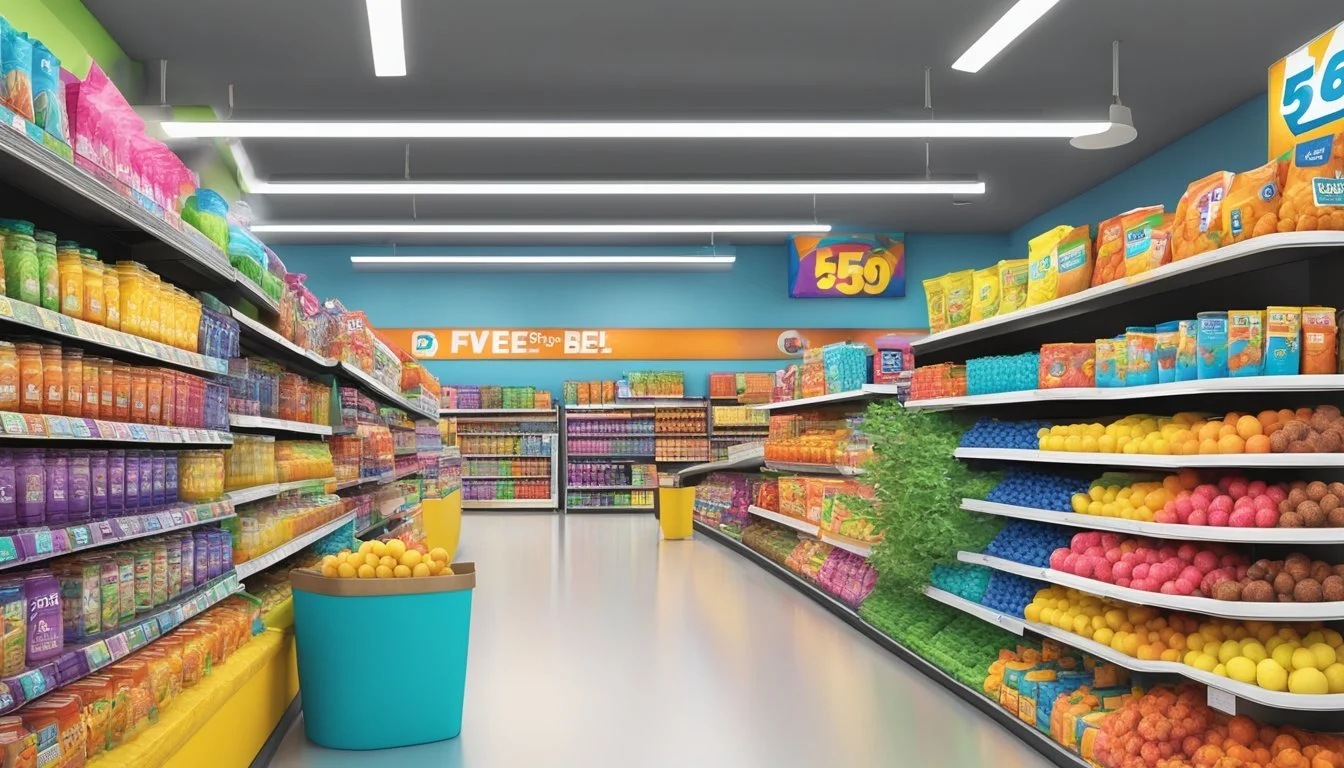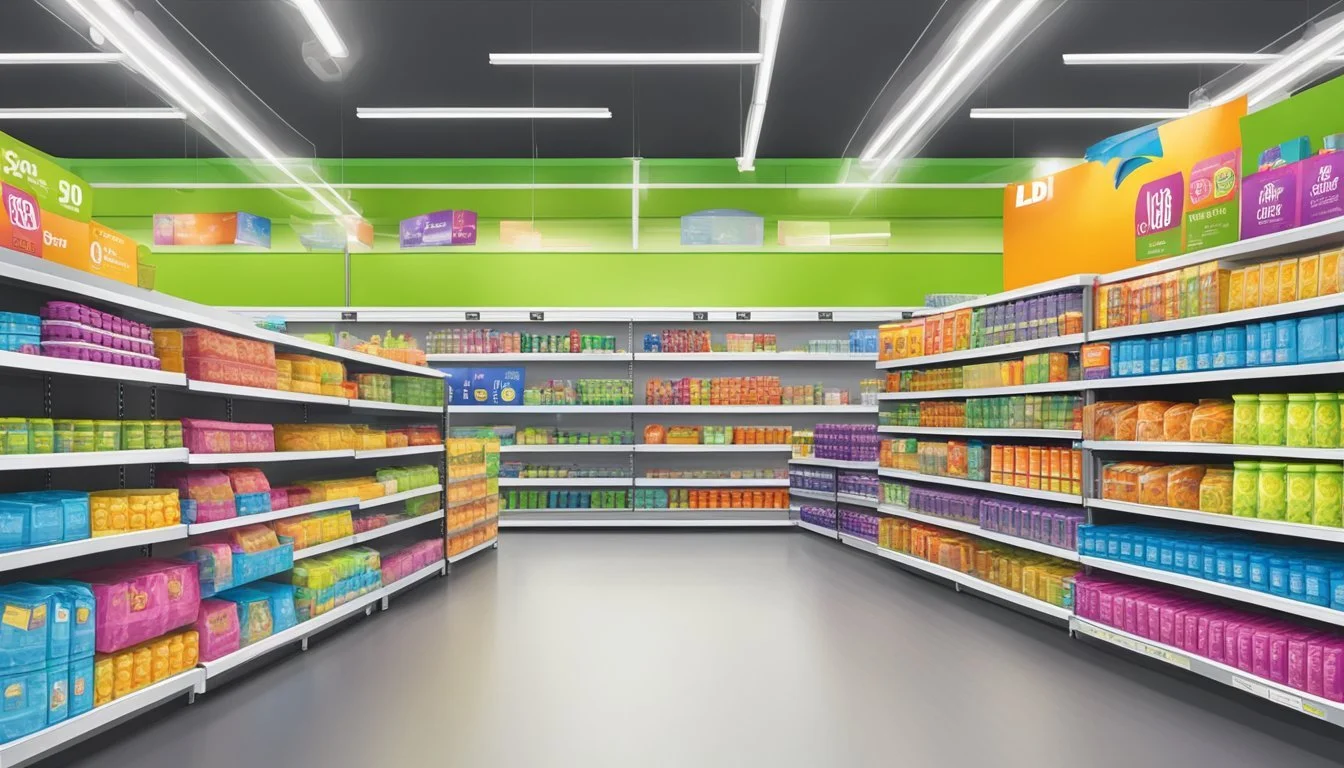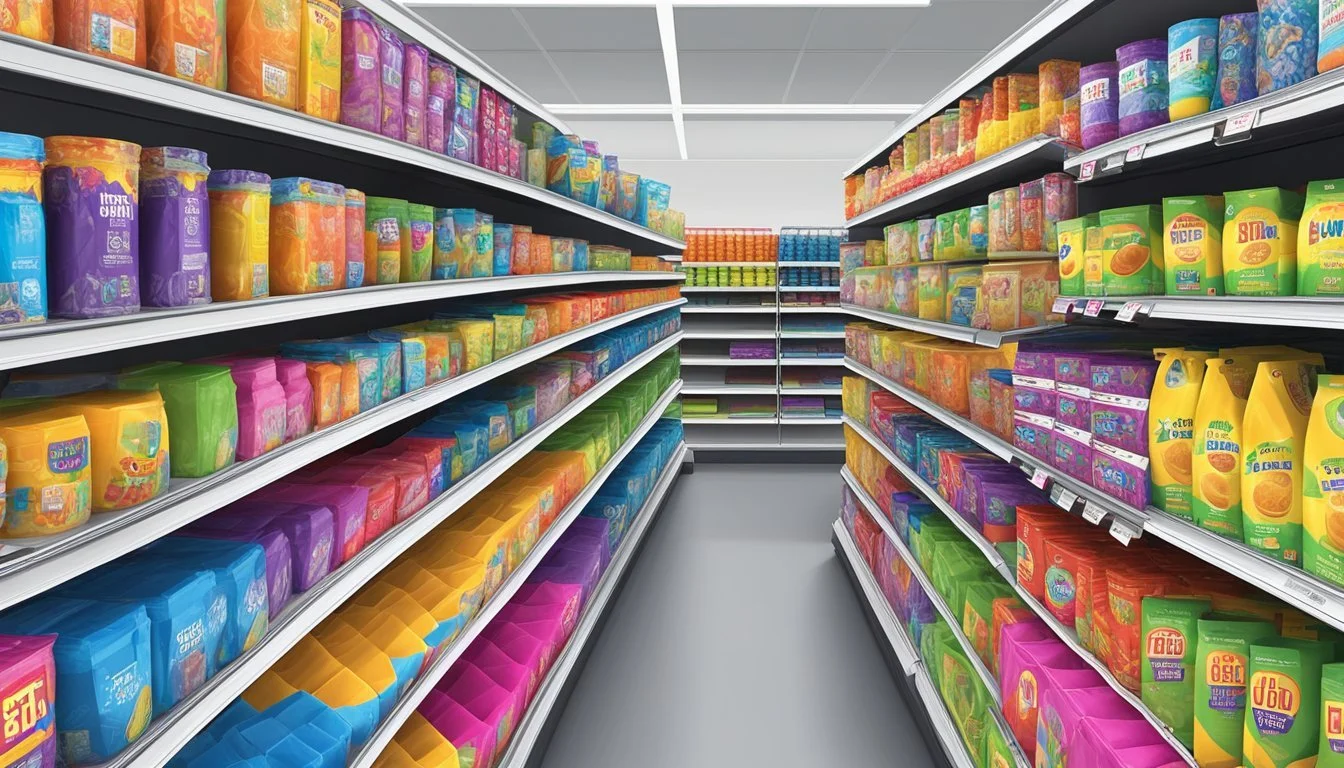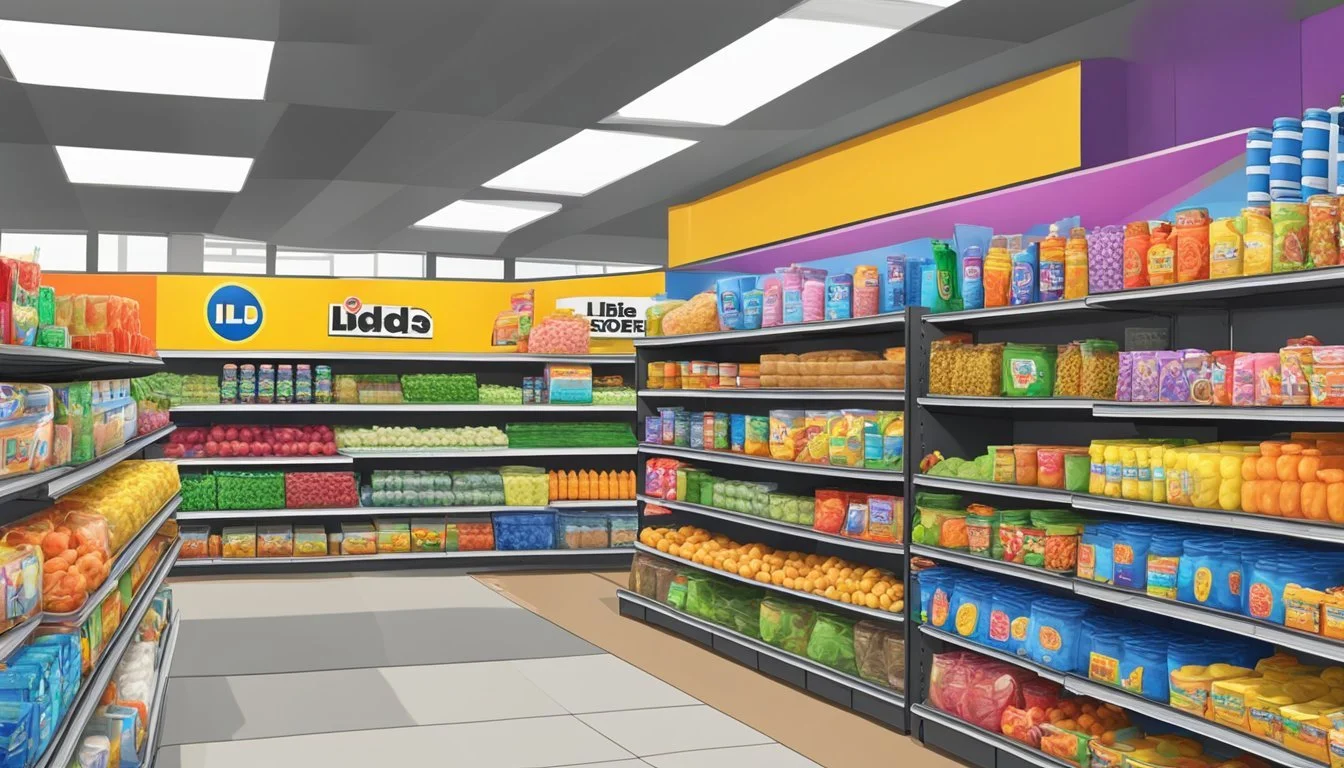Is Five Below Cheaper Than Lidl?
A Price Comparison of Budget Retailers
Five Below and Lidl are both popular discount retailers known for offering affordable products to budget-conscious shoppers. While they cater to different market segments, many consumers wonder which store provides better value for their money.
Generally, Lidl tends to be cheaper than Five Below for everyday grocery items and household essentials. Lidl, as a discount supermarket chain, focuses primarily on groceries and everyday necessities at competitive prices. Five Below, on the other hand, specializes in trendy, non-essential items priced at $5 or less.
The shopping experience at these retailers differs significantly. Lidl offers a streamlined grocery store layout with a mix of private-label and name-brand products. Five Below provides a more eclectic atmosphere, featuring a wide range of fun, impulse-buy items across various categories like toys, accessories, and home decor.
Overview of Five Below and Lidl
Five Below and Lidl are popular discount retailers known for offering low prices on a wide range of products. Both companies have unique business models and store philosophies that set them apart in the competitive retail landscape.
Business Model and Store Philosophy
Five Below operates as a specialty discount store, focusing on products priced at $5 or less. Their target market is primarily tweens, teens, and young adults. The company's philosophy centers on providing trendy, fun merchandise at affordable prices.
Lidl, on the other hand, is a German-based discount supermarket chain. Their business model revolves around offering high-quality groceries and household items at significantly lower prices than traditional supermarkets. Lidl emphasizes efficiency and cost-cutting measures to keep prices low.
Both retailers prioritize value for money, but their product ranges differ significantly. Five Below specializes in non-essential items like toys, accessories, and decor, while Lidl focuses on everyday essentials and groceries.
History and Expansion
Five Below was founded in 2002 by David Schlessinger and Tom Vellios in Pennsylvania, USA. The company has experienced rapid growth, expanding to over 1,000 stores across the United States by 2021.
Lidl's history dates back to 1930 when it was established in Germany. The company began its international expansion in the 1990s and has since grown to operate over 11,000 stores in 32 countries across Europe and the United States.
Both retailers have demonstrated aggressive expansion strategies, with Five Below focusing on the U.S. market and Lidl pursuing a more global approach.
Store Layout and Design
Five Below stores are typically bright and colorful, with a layout designed to appeal to younger shoppers. The stores are organized into distinct sections, such as "Tech," "Create," and "Room," making it easy for customers to navigate.
Products are often displayed in bins or on hanging racks, encouraging browsing and impulse purchases. The store design aims to create a fun, engaging shopping experience.
Lidl stores, in contrast, feature a more minimalist and efficient layout. The stores are typically smaller than traditional supermarkets, with a focus on maximizing space and reducing overhead costs.
Products are often displayed in their original shipping boxes, and the store layout is designed for quick, convenient shopping. This no-frills approach aligns with Lidl's commitment to keeping prices low.
Product Assortment Comparison
Five Below and Lidl offer distinct product ranges tailored to their unique business models. Their assortments differ significantly in terms of categories, pricing strategies, and target markets.
Breadth and Variety of Stock
Five Below focuses on trendy, fun, and affordable items across various categories. Their inventory includes toys, games, tech accessories, beauty products, and home decor. Most items are priced at $5 or less, with some premium products up to $10.
Lidl, as a discount grocery chain, carries a wide range of food and household essentials. Their stock includes fresh produce, meat, dairy, pantry staples, and a rotating selection of non-food items. Lidl's product mix aims to cover weekly shopping needs for families and individuals.
Exclusive Brands and Private-Label Offerings
Five Below offers a mix of popular brands and their own private-label products. Their exclusive brands include Ten Below Tech for electronics and Five Below Fashion for clothing and accessories.
Lidl emphasizes private-label products across numerous categories. Their store brands, such as Preferred Selection and Lidl Love It, offer alternatives to national brands at lower prices. These private-label items often make up a significant portion of Lidl's inventory.
Specialty Items and Seasonal Products
Five Below regularly updates its inventory with trendy and seasonal items. They stock popular products like fidget toys, collectibles, and limited-edition collaborations. Their seasonal offerings include holiday decorations, summer pool accessories, and back-to-school supplies.
Lidl rotates a selection of non-food items weekly, known as "Lidl Surprises." These can include clothing, kitchen appliances, tools, and gardening supplies. Lidl also adjusts its food inventory seasonally, featuring special holiday items and seasonal produce.
Pricing Structure and Strategies
Five Below and Lidl employ distinct pricing approaches to attract customers and drive sales. Their strategies involve everyday low prices, discounts, special offers, and loyalty programs.
Everyday Low Prices and Discounts
Five Below maintains a consistent pricing model, with most items priced at $5 or less. This approach simplifies shopping for customers, who can easily budget their purchases. Lidl, on the other hand, focuses on offering competitive prices across a wide range of products. The discount supermarket chain regularly adjusts prices to remain competitive in local markets.
Both retailers use discounts to drive sales, but in different ways. Five Below occasionally offers items below $5, creating additional value for shoppers. Lidl frequently rotates discounted products, encouraging customers to visit stores regularly to take advantage of changing deals.
Special Offers and Loyalty Schemes
Five Below runs seasonal promotions and limited-time offers to create excitement and urgency among shoppers. These special events often feature exclusive products or deeper discounts on popular items.
Lidl implements a more structured approach to special offers. The supermarket chain introduces weekly deals on select products, typically lasting for a limited time. Lidl also operates a loyalty program in some markets, rewarding frequent shoppers with personalized discounts and exclusive offers.
Price Comparison Methods
Comparing prices between Five Below and Lidl can be challenging due to their different product ranges. Five Below primarily sells non-grocery items, while Lidl focuses on groceries and household essentials.
For comparable items, shoppers can directly compare prices. However, factors like product quality, brand, and package size must be considered. Online price comparison tools and apps can help customers track prices at both retailers over time.
It's important to note that while Five Below maintains a fixed price point for most items, Lidl's prices may fluctuate based on market conditions and local competition. Regular price checks and comparison shopping can help consumers determine which retailer offers better value for specific products.
Consumer Shopping Behavior
Consumer shopping behavior has shifted dramatically in response to economic pressures and changing priorities. People are adapting their habits to stretch their budgets further while seeking value and convenience.
Impact of Cost of Living Crisis
The cost of living crisis has forced many consumers to reevaluate their spending. Shoppers are increasingly price-conscious, comparing costs across stores and brands. Many have switched to cheaper alternatives or store brands to save money. Some consumers are reducing discretionary purchases and focusing on essentials.
Bulk buying of staples has increased as people try to lock in lower prices. Discount stores like Five Below have seen more traffic from budget-conscious shoppers. Consumers are also using coupons, loyalty programs, and sales more frequently to maximize savings.
Shopping List Composition
Shopping lists have evolved to reflect tighter budgets. Consumers are prioritizing necessities over wants. Many are opting for cheaper protein sources like eggs or beans instead of meat. Frozen and canned goods are popular due to their longer shelf life and lower cost.
Shoppers are buying fewer pre-made meals and snacks, preferring to cook from scratch. Generic versions of common items like pasta, rice, and cleaning products have replaced name brands on many lists. Some consumers are cutting out entire categories, like alcohol or sweets, to reduce expenses.
Store Location and Convenience
Store location has become increasingly important as consumers aim to reduce travel costs. Many shoppers now prefer stores within walking distance or on their commute route. This trend has benefited smaller, local shops and convenience stores.
Online shopping has grown due to its convenience and ability to easily compare prices. Many consumers now split their shopping between physical stores for fresh goods and online retailers for non-perishables. Some shoppers are willing to visit multiple stores to get the best deals, while others prioritize one-stop shopping to save time and fuel.
Quality and Value Perception
Comparing Five Below and Lidl reveals distinct differences in product quality and perceived value. Both retailers aim to offer affordable options, but their approaches and focus areas differ significantly.
Assessment of Grocery Staples
Lidl excels in grocery staples, offering a wide range of fresh produce, dairy, and meat products. Their fruits and vegetables are often competitively priced and of good quality. Milk, cheese, and bread from Lidl generally receive positive reviews for taste and freshness.
Five Below, on the other hand, does not focus on grocery items. Their limited food selection typically consists of snacks, candy, and beverages. These products are often name-brand items sold at discounted prices.
Lidl's private-label products frequently match or surpass the quality of national brands. Their eggs, yogurt, and canned goods consistently earn high marks from consumers for both quality and value.
Taste Test Outcomes
In blind taste tests, Lidl's products often perform well against more expensive competitors. Their chocolates, for example, have won awards and frequently outrank pricier brands in consumer surveys.
Five Below's food items are not typically included in formal taste tests. Their selection focuses more on popular snack brands and novelty candies.
Lidl's wines have gained particular recognition, winning numerous awards in international competitions. This success has helped boost the perception of quality across their entire product range.
Customer Satisfaction and Reviews
Lidl customers frequently praise the store's balance of quality and affordability. Many appreciate the rotating selection of seasonal items and the "Lidl Surprises" middle aisle, which offers non-grocery products at competitive prices.
Five Below receives positive feedback for its fun, trendy items and low price point. Customers enjoy the treasure hunt experience of finding unexpected deals.
Lidl's fresh produce and bakery sections often receive high marks in customer reviews. Shoppers appreciate the in-store bakery's variety of freshly baked goods at reasonable prices.
Five Below's target audience differs from Lidl's, focusing more on teens and young adults seeking affordable accessories, gadgets, and room decor. Customer satisfaction in this demographic is generally high.
Financial Considerations
Comparing Five Below and Lidl requires examining their distinct business models and pricing strategies. These factors influence consumer choices and company profitability in the competitive retail landscape.
Margin Strategies
Five Below employs a fixed-price model, selling items at $5 or less. This approach allows for consistent pricing across product categories. The company focuses on trendy, impulse-buy items with higher profit margins.
Lidl, as a discount grocer, uses a low-price strategy on everyday essentials. They balance lower margins on staple items with higher margins on specialty products. Lidl's private-label brands play a crucial role in maintaining competitive pricing while preserving profitability.
Both retailers aim to maximize volume sales to compensate for lower per-item profits compared to traditional retailers.
Cost Analysis and Expectations
Five Below targets a younger demographic with discretionary spending power. Their product mix changes frequently, capitalizing on current trends. This approach can lead to higher procurement costs but allows for premium pricing on in-demand items.
Lidl focuses on efficiency in its supply chain and store operations. They use a limited assortment model, stocking fewer SKUs than traditional supermarkets. This strategy reduces overhead costs and allows for more competitive pricing on essential goods.
Consumers expect different value propositions from each retailer. Five Below shoppers seek affordable trend items, while Lidl customers prioritize savings on groceries and household essentials.
Economic Indicators and Trends
Economic conditions significantly impact both retailers. During economic downturns, discount retailers like Lidl often see increased traffic as consumers seek to cut costs on necessities.
Five Below may experience fluctuations based on consumer discretionary spending. However, their $5-and-below price point remains attractive even in challenging economic times.
Inflation and supply chain disruptions affect both companies' ability to maintain low prices. Lidl competes directly with other discount grocers like Aldi, while Five Below faces competition from dollar stores and mass merchandisers.
Market trends show growing consumer interest in value-oriented shopping experiences, benefiting both Five Below and Lidl in their respective niches.
Ancillary Services and Non-food Items
Five Below and Lidl offer diverse selections of non-food items alongside their core grocery offerings. These additional products range from home goods to electronics, catering to various customer needs beyond food shopping.
Home and Beauty Products
Five Below provides an array of affordable home decor and beauty items. Their selection includes picture frames, small furniture pieces, and decorative accessories, typically priced at $5 or less.
Beauty products at Five Below encompass makeup, skincare, and hair accessories. The store offers budget-friendly alternatives to popular brands.
Lidl's home and beauty section features higher-quality items at competitive prices. Their offerings include bedding, kitchenware, and personal care products. Lidl's "Lidl Surprises" program introduces limited-time home goods and appliances, such as air fryers and pressure washers.
Electronics and Toys
Five Below excels in providing budget-friendly electronics and toys. Their selection includes smartphone accessories, headphones, and small electronic gadgets, all priced at $5 or less.
The toy section at Five Below offers a wide range of options for children, including board games, action figures, and craft kits.
Lidl's electronics and toy offerings are more limited but often of higher quality. They periodically feature electronic items like Bluetooth speakers and smartwatches through their "Lidl Surprises" program.
Sports and Leisure Goods
Five Below's sports section includes affordable exercise equipment, yoga mats, and sports accessories. They also offer seasonal items like pool floats and beach toys during summer months.
Lidl provides a more curated selection of sports and leisure goods. Their offerings often include higher-quality items like camping gear, fitness trackers, and outdoor furniture, available for limited periods.
Both stores stock basic sporting goods like balls, frisbees, and jump ropes year-round.
Arts and Crafts Supplies
Five Below boasts an extensive arts and crafts section. Their inventory includes coloring books, art sets, stickers, and scrapbooking materials. The store caters to both children and adults interested in creative hobbies.
Lidl's arts and crafts offerings are more limited but often feature higher-quality supplies. They periodically stock art sets, painting supplies, and craft kits as part of their rotating inventory.
Both stores offer basic crafting essentials like markers, crayons, and glue sticks year-round, with Five Below generally providing a wider variety at lower price points.








